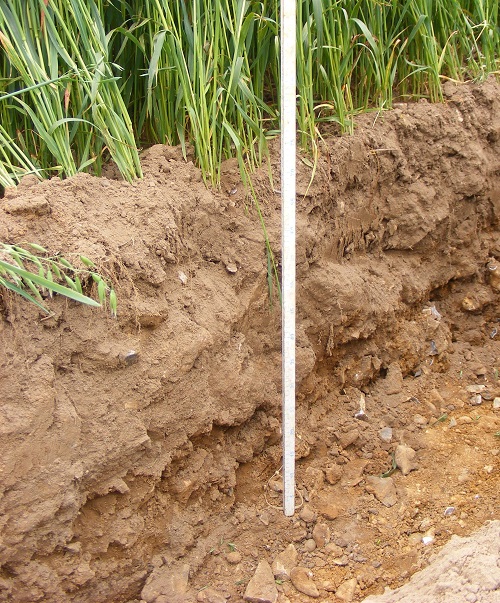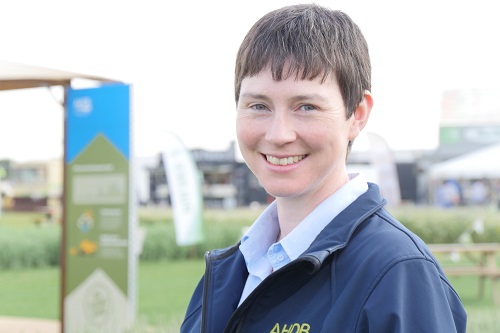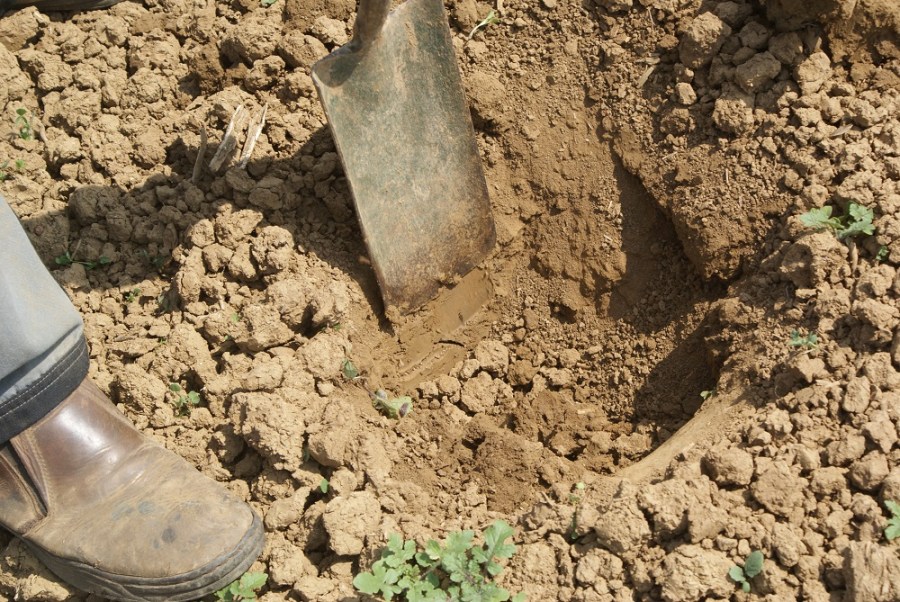In recent years there’s been a sea-change in attitude towards soil health, with many growers ditching the plough in favour of non-inversion cultivation techniques. CPM investigates the science.
There’s a trade-off between inversion and non-inversion tillage.
By Lucy de la Pasture
The past decade has witnessed an ‘awakening’ when it comes to soils and soil health has become a hot topic. But the degree management changes actually have an impact on soils is an area where there are still many unanswered questions, believes AHDB resource management scientist, Dr Amanda Bennett.

The long-term experiments at three sites enable scientists to by-pass the conversion stage and assess long-term differences in cultivation strategies
“AHDB is making a sustained investment into soil research to help qualify how growers can improve management of their soils. Every grower’s soils are unique and influenced by many factors such as soil type, its use, the rotation and the cultivation practices that have been employed.
“We’re making incremental steps in knowledge gain, but it can take several years for changes in soil management to have an impact,” she adds.
And that’s where the information provided by the soil platforms research is providing a real insight into the way management effects soils, explains Amanda Bennett.

Amanda Bennetts says AHDB is making a sustained investment in soil research to address the many unanswered questions.
Long-running experiments
Originally set up using three already established, long-running experiments on different soil types and rotations in England (NIAB-TAG) and Scotland (James Hutton Institute – JHI), a fourth site was added at the Centre for Sustainable Cropping at JHI’s Balruddery farm.
“The long-term nature of these experimental sites means we’re able to bypass the stage when soils are in conversion. They’re yielding useful information about the differences growers who are considering going down the non-inversion tillage route can expect in years to come.
“As well as the broader perspective on soil health, the economics of different systems has also been evaluated and this analysis will provide useful decision-making support to those considering changing their soil-management practices,” she says.
JHI soil scientist, Dr Blair McKenzie points to the differences in uptake of reduced tillage systems across the UK, with the wetter northern and western regions generally using more inversion tillage systems than the drier regions.
Although there can be an element of evangelism about non-inversion tillage and in South America no-till is the norm, in Northern Europe and particularly with the UK’s maritime climate, inversion tillage is an established means of weathering and drying soils.
Intensive cultivation
The theory behind intensive cultivation is to loosen the soil and create a homogeneous seedbed for even germination and rapid early root-elongation. The downside is that if the soil is unstable, the structure in the seedbed may quickly degrade, but as the crop grows, the action of plant roots, soil fauna and weathering may create aggregation and stabilise the new structure.
The ethos of reduced tillage systems is that the mechanical action of the plough can be replaced by biology that won’t mechanically disrupt soil. This means existing channels or biopores will remain intact and pans created by the passage of a plough can be avoided.
“There’s a trade-off between inversion and non-inversion tillage. In the platform work, yields are lower under non-inversion tillage but there are overall economic benefits, with reduced time and fuel costs as well as improved soil health,” he explains.
“The results of our work indicate there’s no reason not to make a move towards non-inversion tillage. Although yields may not be as good under these systems, the unit costs of production will be smaller, driving up profitability, so it’s worth taking a long, hard look at your enterprise.”
One of the questions scientists set out to answer in the soil platforms research, was whether more carbon is stored in soils under no-till systems.
Traditional ploughing exposes soil to the air and facilitates rapid mineralisation – the breakdown of soil organic matter with the release of plant-available nutrients. The process is a loss of the soil organic carbon which delivers other important functions such as providing inherent resilience to physical degradation, maintaining stability and perhaps sequestering carbon within the soil.
“It’s often claimed that this happens and some research studies seem to indicate this, but we’ve found that when looking at the whole depth of the soil profile, there is no such accumulation of carbon.
“If you change the density of the soil, then there’s a change in carbon reporting per unit of volume, so an adjustment needs to be made to allow for this. Under no-till, the distribution of carbon is different, with more nearer the soil surface and less carbon at depth than under ploughed systems, where the carbon is distributed throughout the soil profile. This distribution is mirrored by the distribution of essential nutrients such as N and P.”
Scientists in Finland have come to similar conclusions in a similar climate, so the results are making sense, adds Blair McKenzie.
A further interesting aspect of the soil platform work involves the performance of different varieties under the tillage systems, he highlights.
“In general, the newer lines do better under both inversion and non-inversion systems, but at each end of the spectrum there are some cultivars that show big differences in their performance under the different systems and some cultivars that show very little variation in performance,” he explains.
So why is this? Blair McKenzie believes there are a number of reasons for the discrepancy in performance with some varieties.
Rooting characteristics
“When creating different soil conditions, the rooting characteristics of varieties comes into play and they can’t all be expected to do as well in different rooting environments. Most plant breeding work and the Recommended List trials are carried out under ploughed conditions, so the performance of varieties grown under non-inversion systems isn’t available for growers to assess.
“In our trials, one of the spring barley varieties that showed very little difference when grown in either system was Concerto. It’s a variety that already has a good reputation on farm for being a consistent performer – an example of grower experience meeting with science,” he comments.
“Breeders are starting to consider below-ground traits, so improvements will be made in matching crop genetics to the growing environment. But there’s an opportunity to do this better if plant breeders also work together with soil scientists,” he says.
And that means paying as much attention to soil physics as to soil biology, which tends to capture the headlines, believes Blair McKenzie and it’s something the soil platform project has also investigated.
“It’s important to look at the soil environment for plant roots in terms of its ability to supply water, allow roots to have air and to proliferate easily through the soil profile. We looked at the physical quality of soils under inversion and non-inversion tillage and found important differences over time.
“Where soils were under ploughed conditions, their physical characteristics were good early on but became less good as the season progressed. For soils under non-inversion systems, conditions weren’t as good at the start of the season but they continued to improve throughout the crops growth,” he explains.
Looking deeper into the soil profile, below plough depth (30-40cm) the soil physics (attributes such as hardness) begins to limit root proliferation under both non-inversion and inversion tillage systems, he points out.
“Increasingly bigger, heavier machinery is being driven on soils, with the capability of working soils deeper and under conditions when they shouldn’t be worked. Tramlines can’t ameliorate against this trafficking damage, which is limiting root proliferation because soils are hard at depth. The only way to counteract this is to start thinking differently,” he says.
“Soils in the UK are relatively young, with chemistry and organic matter levels which are still reasonable which is why we’ve been able to get away with things. In recent seasons, soils are being exposed to long periods of wet and cold conditions but not as much freezing over the winter and it’s having a detrimental effect on soil quality, due to soil slumping and anaerobic conditions.
“If climate change predictions are right and we want to protect soils, then we have to think even more about them and begin to make a series of measurements using simple equipment across the season to assess changes in soil quality. Getting out with a spade, touching and smelling aggregates and using a mobile phone to take photos is a good start,” he suggests.
Amanda Bennett believes it’s important to maintain the expertise the UK has in soil research to feed the thirst for information the new awareness about soil health is generating amongst growers. Another project has identified that applying organic matter amendments to soils can lead to yield improvements in as little as two years, with an added benefit in difficult conditions where crop resilience is improved.
“Two new five-year programmes of research and knowledge exchange are underway, one is looking at better understanding soil biology and health (physical, chemical and biological properties) and the other is investigating the rotation, soil structure and water, to add to this existing pool of knowledge and help improve soil management,” she adds.
Scaling back on horse power
Decision-making at Balbirnie Farms in Fife is very much guided with the interests of soils at heart. Farms manager, David Aglen has been moving away from large, heavy machinery in recent years, believing the soil damage they do is a greater cost to the business than any potential time savings created by using larger-scale machinery.
“We had a run of wet harvests, with record-breaking rainfall in 2011 followed by an even worse year in 2012. The soils just gave up,” he says.
The Balbirnie Estate has a 1200ha farming enterprise in-hand, with 800ha dedicated to cereal, root vegetable and brassica production. The soil type is predominantly a sandy loam, with small variations in silt content across the farm, says David Aglen.
“The cultivation system was very traditional with everything ploughed, followed by the power-harrow drill combination. The soil didn’t really need as much work as it was getting. In 2011, we began to look at down-sizing machinery to smaller and lighter machines that would be less damaging.”
As a result, the 300hp tractor was sold and replaced with a 240hp machine, weighing 3t less, which was found to cover the same acreage without a problem and tyre pressures dropped from 1.4+ bar down to 0.8 bar, he notes.
“We learned that when it’s very wet, then it’s time to stop. Don’t try and force the soil, just pull the pin and go home.”
David Aglen has been looking at a number of cultivation alternatives to replace the plough, which still has a place in his seven-year rotation which includes potatoes. He looked at a John Deere disc drill and a Weaving, eventually settling on the JD750 which performed the best as a direct drill in his farming situation.
“We’re trying to move towards no-till but we’re finding our limited break crop options are making it difficult, mainly because of grassweeds. We grow oats for Quaker, spring beans, winter and spring barley and winter wheat. We used to grow oilseed rape but gave up in 2011, and we haven’t needed to apply slug pellets since,” he notes.
Although oats provide a break, the fact that they are a cereal doesn’t help with grassweed control. Because harvest is relatively late at Balbirnie, getting cover crops established is a problem in his usual rotation. One of the rotational options he’s trying is rye for a local AD plant. It comes off early enough to get a cover crop in during July as a mini-break before winter oats, he explains.
Companion cropping is another idea David Aglen’s toying with. “We’re going to try growing beans with clover next year. Legume mixes can bring huge benefits to the soil and will provide a cash crop, as well as acting as a soil improver.”
His advice to other growers is to experiment, saying the best ideas come from trial and error. He also recommends a spade and a trowel as essential equipment to have in the Landrover at all times, as there’s no substitute for actually having a dig yourself.
Research round-up
AHDB project RD-2012-3786, ‘Platforms to test and demonstrate sustainable soil management: integration of major UK field experiments’, ran from Oct 2012 to Sept 2016. Its aims were to assess differences in soil conditions for plant growth, to quantify carbon concentrations under different forms of soil management, to measure the impact of soil management on the performance of contrasting cereal varieties, to determine the broader impacts of the changes in soil management practices to more sustainable systems and to measure inputs and outputs of production system costs. Its total cost was £723,745.
AHDB project RD-2012-3787, ‘Improvement of soil structure and crop yield by adding organic matter to soil’, ran from Sept 2012 to Aug 2016 at a cost of £774,999. The aim was to find the minimum addition of external sources of organic matter which brings about the maximum improvements in crop yield, soil and environmental quality.




